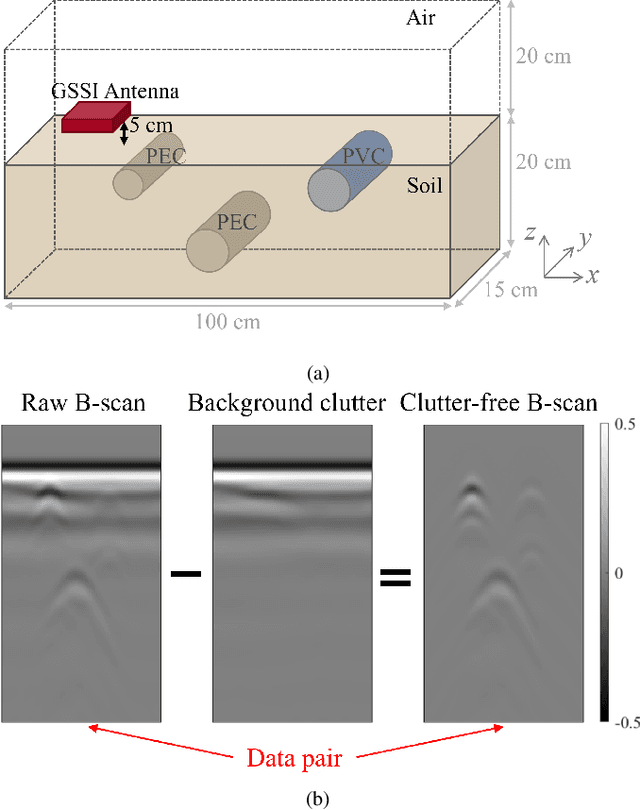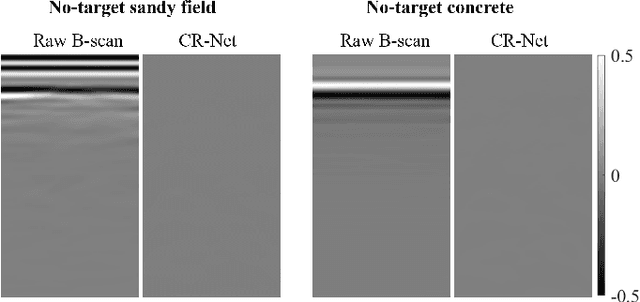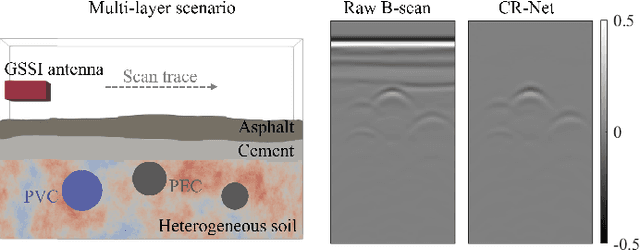Weixia Cheng
Diameter Estimation of Cylindrical Metal Bar Using Wideband Dual-Polarized Ground-Penetrating Radar
Dec 26, 2022



Abstract:Ground-penetrating radar (GPR) has been an effective technology for locating metal bars in civil engineering structures. However, the accurate sizing of subsurface metal bars of small diameters remains a challenging problem for the existing reflection pattern-based method due to the limited resolution of GPR. To address the issue, we propose a reflection power-based method by exploring the relationship between the bar diameter and the maximum power of the bar reflected signal obtained by a wideband dual-polarized GPR, which circumvents the resolution limit of the existing pattern-based method. In the proposed method, the theoretical relationship between the bar diameter and the power ratio of the bar reflected signals acquired by perpendicular and parallel polarized antennas is established via the inherent scattering width of the metal bar and the wideband spectrum of the bar reflected signal. Based on the theoretical relationship, the bar diameter can be estimated using the obtained power ratio in a GPR survey. Simulations and experiments have been conducted with different GPR frequency spectra, subsurface mediums, and metal bars of various diameters and depths to demonstrate the efficacy of the method. Experimental results show that the method achieves high sizing accuracy with errors of less than 10% in different scenarios. With its simple operation and high accuracy, the method can be implemented in real-time in situ examination of subsurface metal bars.
Learning to Remove Clutter in Real-World GPR Images Using Hybrid Data
May 17, 2022



Abstract:The clutter in the ground-penetrating radar (GPR) radargram disguises or distorts subsurface target responses, which severely affects the accuracy of target detection and identification. Existing clutter removal methods either leave residual clutter or deform target responses when facing complex and irregular clutter in the real-world radargram. To tackle the challenge of clutter removal in real scenarios, a clutter-removal neural network (CR-Net) trained on a large-scale hybrid dataset is presented in this study. The CR-Net integrates residual dense blocks into the U-Net architecture to enhance its capability in clutter suppression and target reflection restoration. The combination of the mean absolute error (MAE) loss and the multi-scale structural similarity (MS-SSIM) loss is used to effectively drive the optimization of the network. To train the proposed CR-Net to remove complex and diverse clutter in real-world radargrams, the first large-scale hybrid dataset named CLT-GPR dataset containing clutter collected by different GPR systems in multiple scenarios is built. The CLT-GPR dataset significantly improves the generalizability of the network to remove clutter in real-world GPR radargrams. Extensive experimental results demonstrate that the CR-Net achieves superior performance over existing methods in removing clutter and restoring target responses in diverse real-world scenarios. Moreover, the CR-Net with its end-to-end design does not require manual parameter tuning, making it highly suitable for automatically producing clutter-free radargrams in GPR applications. The CLT-GPR dataset and the code implemented in the paper can be found at https://haihan-sun.github.io/GPR.html.
 Add to Chrome
Add to Chrome Add to Firefox
Add to Firefox Add to Edge
Add to Edge